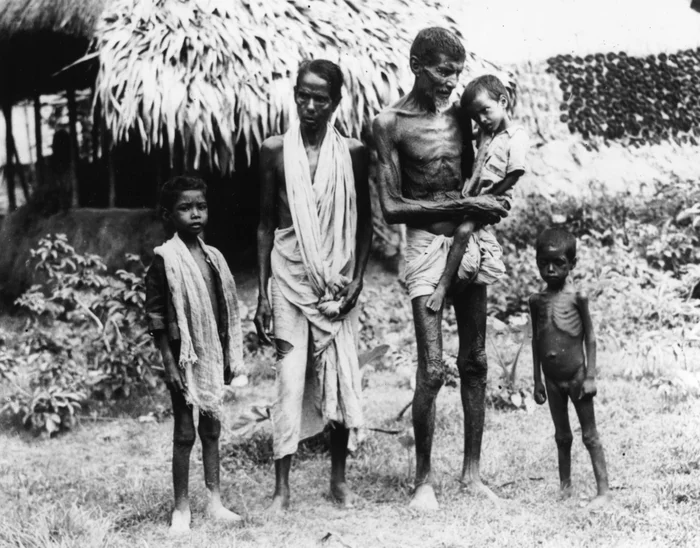In 1876, a single image captured a tragedy that words could never fully explain. A father, gaunt and hollow-eyed, clung to the last semblance of strength as his children mere skeletons lay helpless at his feet. It was not just a scene of hunger, but a haunting portrait of the collapse of dignity, hope, and humanity. This was the Madras Famine.
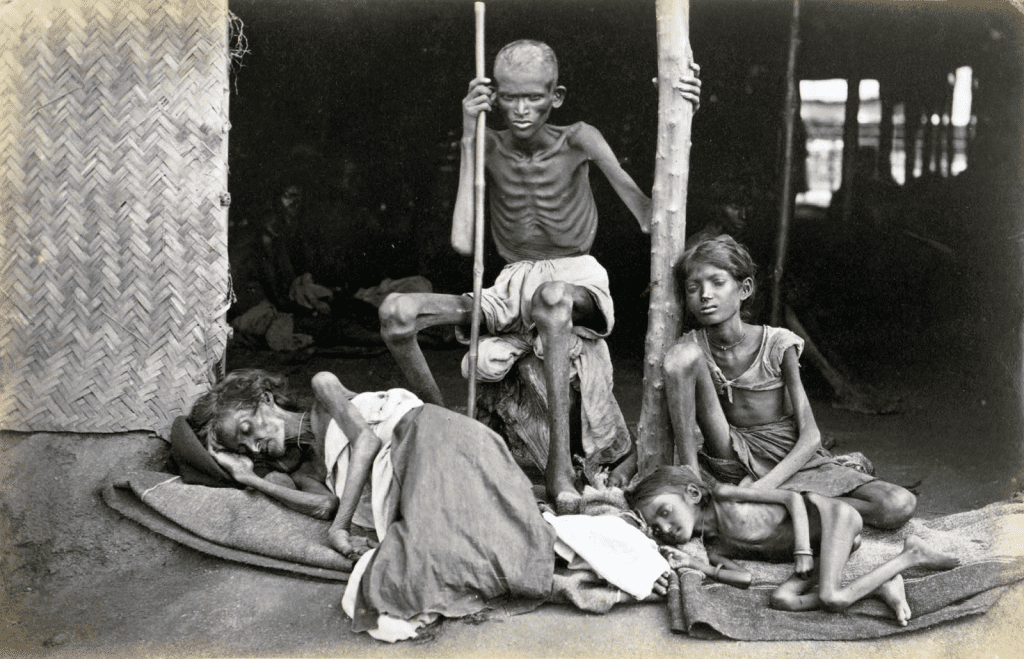
The Silent Horror Behind a Single Image
It’s said that a photo is worth a thousand words but some are worth millions. The image of a father holding his dying child during the Madras Famine struck a raw nerve across continents. His sunken eyes didn’t just reflect despair they mirrored the breakdown of society itself.
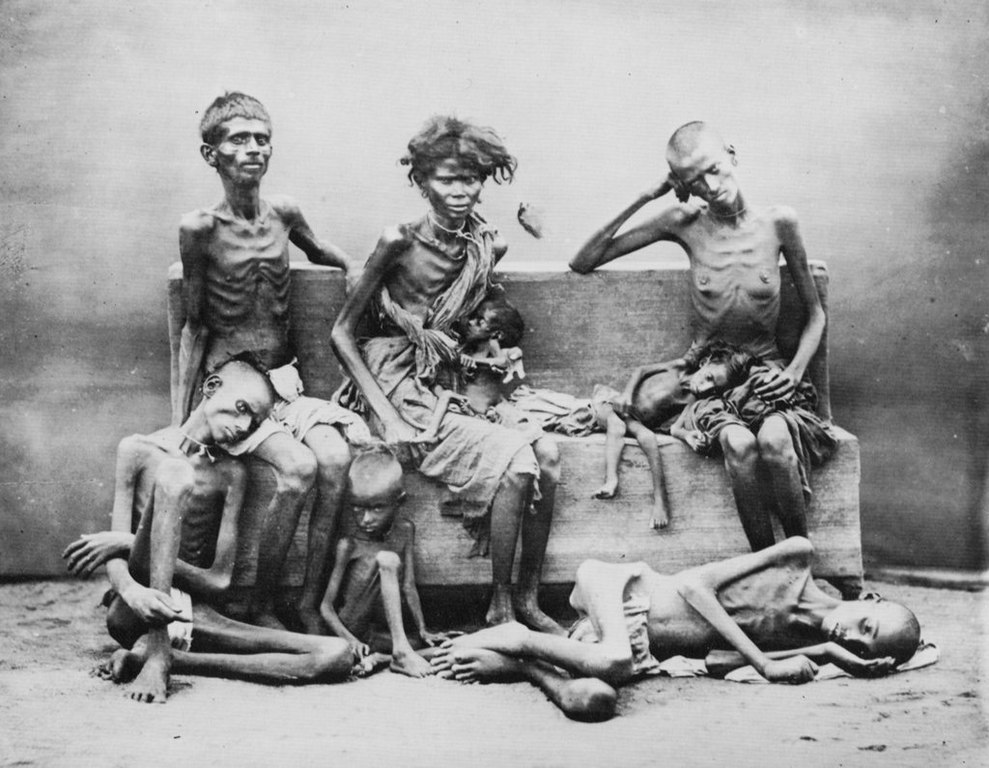
This wasn’t just about empty bellies. It was about an entire system unraveling under the weight of indifference, drought, and policy failure. Behind the camera’s frame was a silent scream a call for the world to witness suffering that too many tried to ignore.
Video:
How the Madras famine of 1877 was covered up
What Was the Madras Famine?
The Madras Famine, also known as the Great Famine of 1876–1878, ravaged southern India and claimed over 5 million lives. It was triggered by a devastating drought but fueled by something far more sinister mismanagement and colonial neglect.
The British Raj, focused more on revenue collection and grain exports than relief, allowed food supplies to dwindle even as people dropped dead in the streets. Grain was being shipped out of India while millions starved within it.
The famine wasn’t merely a natural disaster. It was man-made in many aspects, magnified by economic priorities that put profits before people.
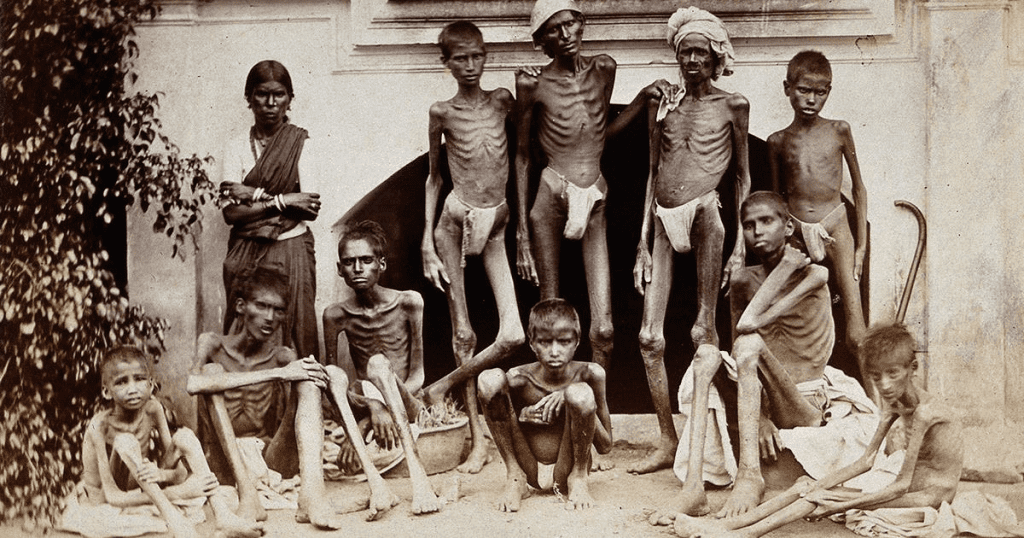
A Father’s Silent Cry
The photo that circulated after the famine wasn’t staged. There were no props, no lighting tricks. It was a spontaneous moment of agony captured forever. A father crouched over his lifeless child
his frame barely able to support himself, let alone his grief.
In that father’s face was a question we still struggle with today: How can the world let this happen?
He wasn’t just mourning a child. He was mourning a system that failed him. A society that turned its back. A government that didn’t flinch as death became common.
Video:
The Unspeakable Things That Happened In The Bengal Famine
The Collapse of Society
The Madras Famine was a collapse not just of agriculture but of empathy. The traditional systems of grain storage, local charity, and communal support were pushed aside by new colonial structures that prioritized order over humanity.
Markets became inaccessible. Prices soared. Work camps were created but paid starvation wages. Relief policies were often cruelly rigid, requiring proof of labor from people too weak to walk.
Social order disintegrated. Families abandoned children. Parents begged strangers to take infants they could no longer feed. Communities turned on each other. The famine tore at the social fabric, not just the stomach.
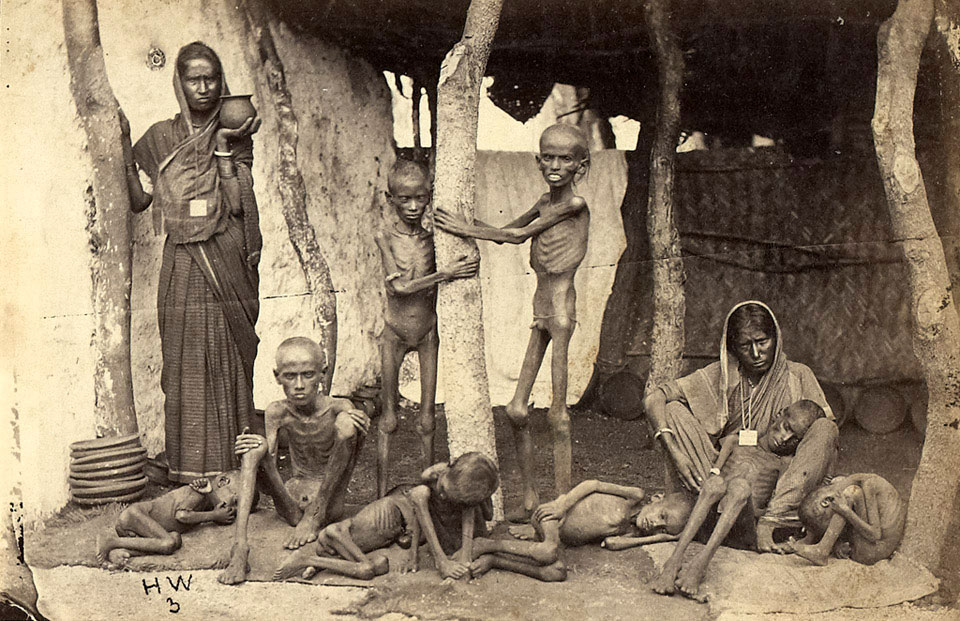
Lessons Still Relevant Today
It would be easy to file the Madras Famine under “history” a relic of a darker past. But its lessons remain deeply relevant.
In a world still marked by economic inequality, food insecurity, and policy-driven humanitarian crises, the haunting stare of that father is a reminder. It reminds us that progress means nothing without compassion. That infrastructure is meaningless without justice. That data and development can’t replace empathy and dignity.
It also forces us to ask: Are we any better now at hearing the cries behind closed doors?
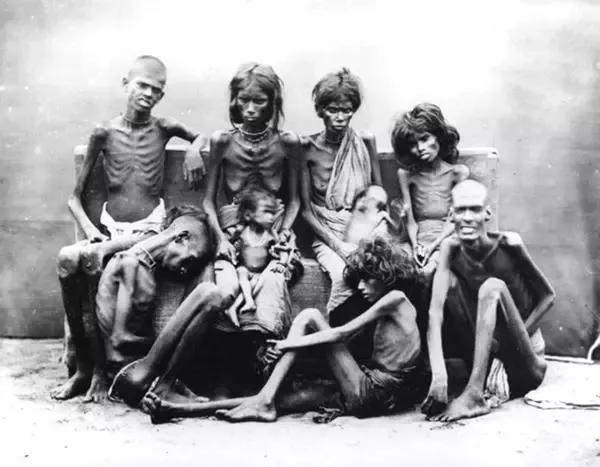
Why That One Photo Still Matters
That single photo from the Madras Famine isn’t just a document. It’s a mirror.
It asks us what we value. It challenges us to see beyond borders, economies, and ideologies to what truly matters: the human being in front of us, barely hanging on.
Because when a father loses everything when he is reduced to watching his child fade away there is no greater collapse than that.
And if we don’t remember his story, if we don’t act in today’s world with that image burned into our conscience, we risk allowing history to repeat itself in new and equally tragic forms.
